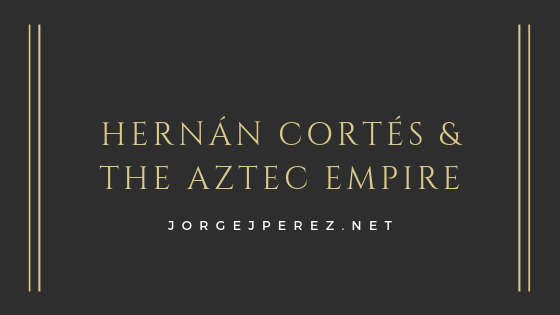Best known for his conquest of the Aztec empire in 1521, Hernán Cortés was a Spanish conquistador who was also, in part, responsible for the colonization of Cuba. His conquest was described as brutal (mostly by English and German Protestant sources) and influential in regards to the trend of sieges and military onslaughts conducted by European, namely Spanish, leaders. Of course, all empires of that age, including the English, German states and even the Aztecs themselves, were brutal to their enemies.
Early Life
Born to modest nobility in 1485, Cortés went to law school at age 14 but found himself dissatisfied. Fascinated by the explorations of Christopher Columbus, who landed in the new world when he was a young boy, Cortés became fascinated by the prospect of exploration and aiding in supplying items of high demand—namely spices like nutmeg, cloves, and cinnamon—to the public. At age 19, Cortés went to the New World where he initially served as a notary and farmer before enlisting to participate in the conquest of Cuba.
Into Mexico
Following the Cuban operation, Cortés was appointed by Velázquez, the governor of Cuba, to lead an exploratory mission into Mexico. However, Cortés wanted to do more than simply explore, and with a fleet of more than 11 ships and a band of more than 600 soldiers and sailors, Cortés defied the governor’s orders and began his conquest in 1519.
Though there are some discrepancies among records of Cortés’s arrival in the Aztec Empire, it is agreed upon that the Aztec ruler, Montezuma II, greeted him openly, uncertain of Cortes’ intentions but hoping to buy him off with gold. Taking this opportunity, Cortés kidnapped the leader as a means of leverage, intending to rule through him. At his side was a woman who served as his translator and mistress, named La Malinche. She spoke Aztec and Mayan languages and eventually learned Spanish, as well; it is believed that she aided in using Montezuma II and advised Cortés about potential plots to challenge him.
The Aztec Empire
Mexico had been discovered by the Spanish one year before Cortés’s initial invasion. In just over one century, the city of Tenochtitlán expanded into the renowned Aztec empire, largely due to its advancements in agriculture and perpetual warfare against neighboring indigenous tribes. The empire stretched as far south as where Nicaragua is today.
Upon his arrival in the Aztec Empire, Cortés was exposed to the vastly different cultural practices and religious beliefs held by the Aztec people. He and his forces found the Aztec pantheon of pagan gods and their focus on violent religious rituals disturbing. They were also shocked by the Aztec practice of systemic, ritualized human sacrifice and cannibalism. Among other things, Cortés was believed to have replaced statues of idols with depictions of the Virgin Mary.
Aftermath
Because of his disobedience, Cortés had to face the wrath of Velázquez who felt betrayed by his unguided initiative. After leaving to face Velázquez, Cortés left a man named Pedro de Alvarado in charge. Alvarado executed many chieftains in Cortés’s absence, resulting in high tensions and increased rebellion. In 1520, as the Spanish forces evacuated across one of the many bridges that spanned Lake Tenochtitlan to avoid the now furious Aztecs, and the night would come to be known as “The Night of Sorrows” as many Spaniards drowned in their escape.
The Conquest
Despite the “The Night of Sorrows,” Cortés returned to Mexico, this time with what was left of his army. His forces were reinforced by more troops from Cuba as well as tens of thousands of Native American allies who were eager to retaliate against the Aztec empire for years of oppression. Having built a makeshift navy, the Spanish and their native allies advanced from multiple directions on Tenochtitlán. Despite being outnumbered well over 100 to 1, Cortés triumphed, conquering the Aztec Empire, its vast wealth and greatly expanding the Spanish Empire. The conquest by Cortés and other Conquistadors would fuel a 16th-century “arms race” among the great powers of Europe as the English, French, Portuguese and Dutch, among others, raced to capture their piece of the New World.
___
Jorge J. Perez is an attorney in South Florida. He is a self-professed history buff. Visit JorgeJPerez.net often to learn more.

